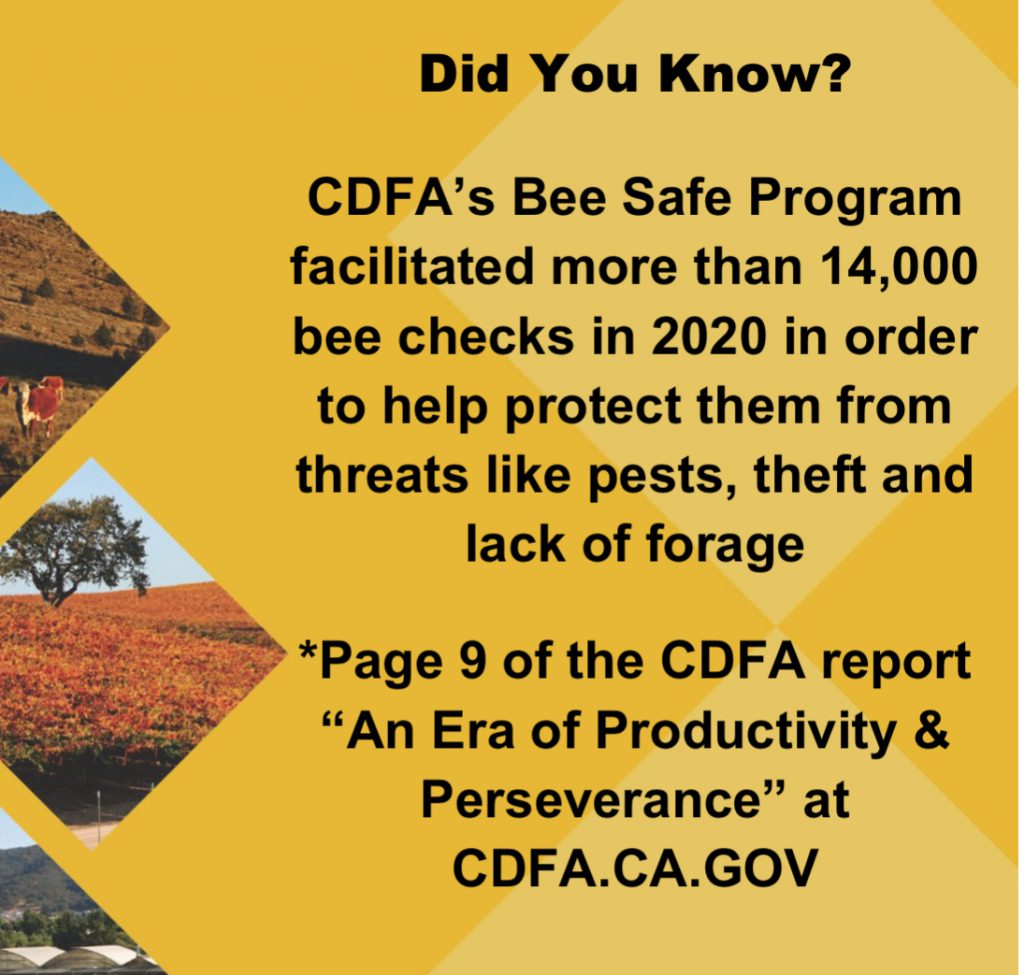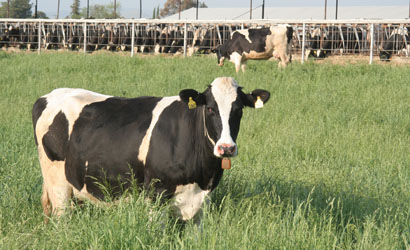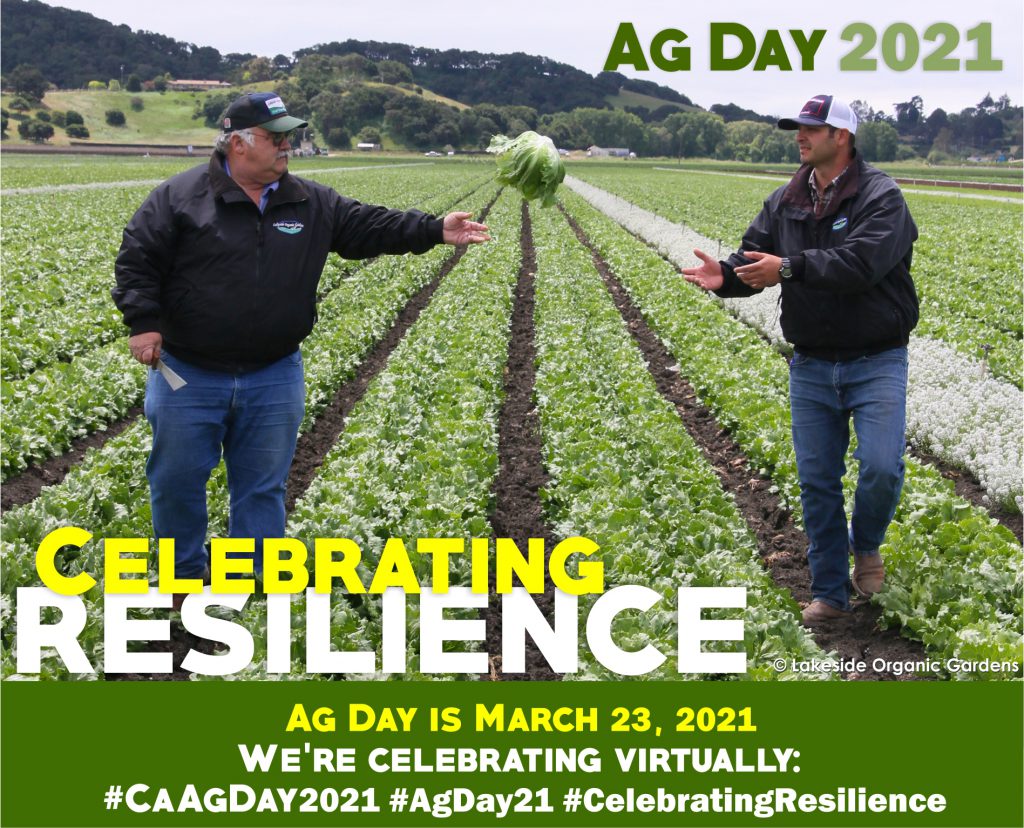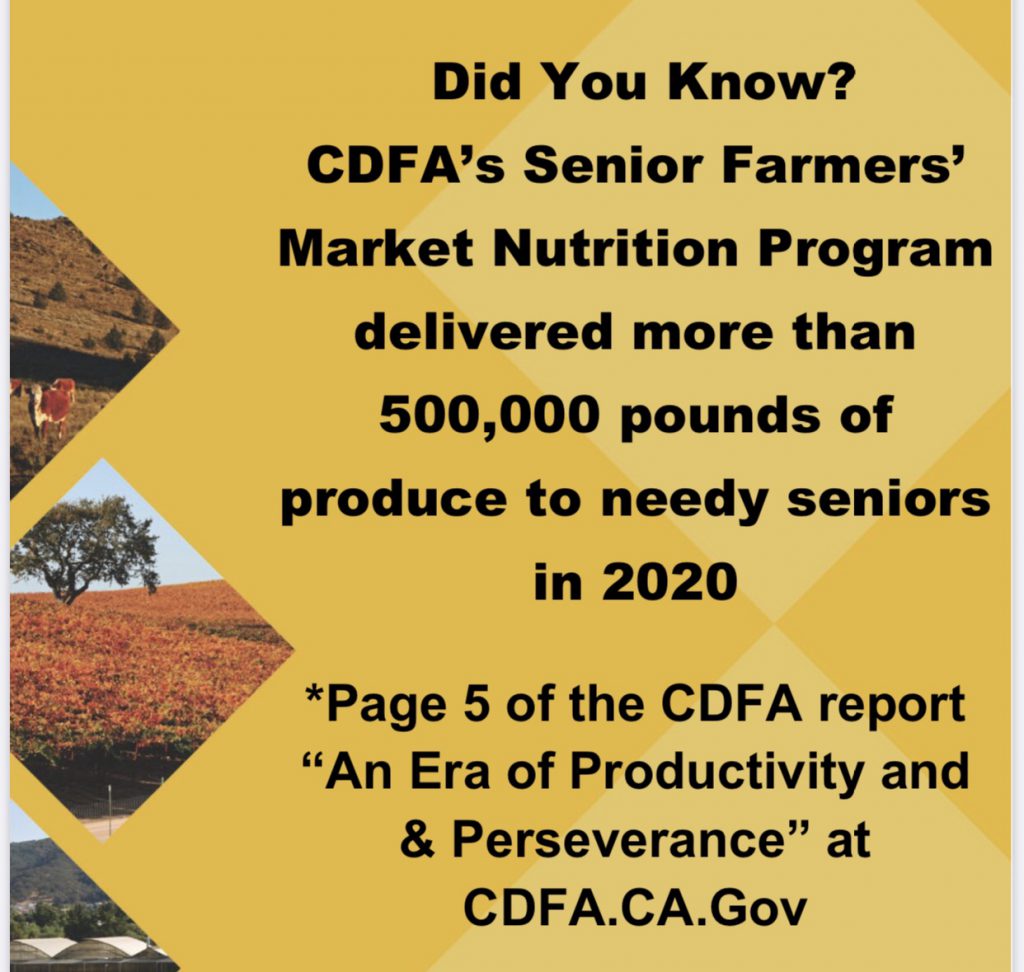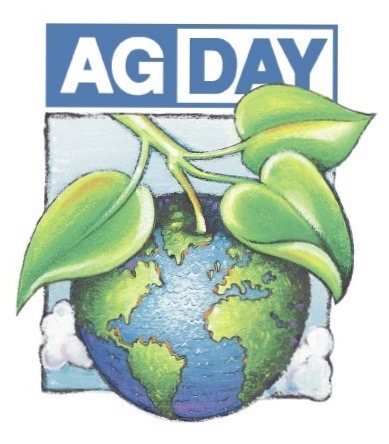-
Recent Posts
- $600 million for CDFA in new budget year
- A Pride Month Conversation with Cody Nicholson Stratton, of Foggy Bottoms Boys Farms
- Experience California Agriculture — Secretary Ross applauds new agritourism website from California Grown
- CDFA Celebrates Pride Month with Panel of LGBTQ+ Voices
- CDFA marches with Pride in Sacramento
Recent Comments
- Stacy Hackney on Despite Tariffs, California Continues Trade Engagement
- Keshav Boddula on Earth Week spotlight — CDFA Food Recovery webpage offers resources for reducing food waste
- Don’t Worry, US Investors Can Still Make Offshore Wind Happen … Somewhere – Bruce Beach CA News on California Peaches and Nectarines Arrive in Vietnam! New Export Market Opens for California Products
- US Investors Can Still Make Offshore Wind Happen…In Vietnam - Oilandinvest.com on California Peaches and Nectarines Arrive in Vietnam! New Export Market Opens for California Products
- US Investors Can Still Make Offshore Wind Happen…In Vietnam - nrinvesting.com on California Peaches and Nectarines Arrive in Vietnam! New Export Market Opens for California Products
Archives
- July 2025
- June 2025
- May 2025
- April 2025
- March 2025
- February 2025
- January 2025
- December 2024
- November 2024
- October 2024
- September 2024
- August 2024
- July 2024
- June 2024
- May 2024
- April 2024
- March 2024
- February 2024
- January 2024
- December 2023
- November 2023
- October 2023
- September 2023
- August 2023
- July 2023
- June 2023
- May 2023
- April 2023
- March 2023
- February 2023
- January 2023
- December 2022
- November 2022
- October 2022
- September 2022
- August 2022
- July 2022
- June 2022
- May 2022
- April 2022
- March 2022
- February 2022
- January 2022
- December 2021
- November 2021
- October 2021
- September 2021
- August 2021
- July 2021
- June 2021
- May 2021
- April 2021
- March 2021
- February 2021
- January 2021
- December 2020
- November 2020
- October 2020
- September 2020
- August 2020
- July 2020
- June 2020
- May 2020
- April 2020
- March 2020
- February 2020
- January 2020
- December 2019
- November 2019
- October 2019
- September 2019
- August 2019
- July 2019
- June 2019
- May 2019
- April 2019
- March 2019
- February 2019
- January 2019
- December 2018
- November 2018
- October 2018
- September 2018
- August 2018
- July 2018
- June 2018
- May 2018
- April 2018
- March 2018
- February 2018
- January 2018
- December 2017
- November 2017
- October 2017
- September 2017
- August 2017
- July 2017
- June 2017
- May 2017
- April 2017
- March 2017
- February 2017
- January 2017
- December 2016
- November 2016
- October 2016
- September 2016
- August 2016
- July 2016
- June 2016
- May 2016
- April 2016
- March 2016
- February 2016
- January 2016
- December 2015
- November 2015
- October 2015
- September 2015
- August 2015
- July 2015
- June 2015
- May 2015
- April 2015
- March 2015
- February 2015
- January 2015
- December 2014
- November 2014
- October 2014
- September 2014
- August 2014
- July 2014
- June 2014
- May 2014
- April 2014
- March 2014
- February 2014
- January 2014
- December 2013
- November 2013
- October 2013
- September 2013
- August 2013
- July 2013
- June 2013
- May 2013
- April 2013
- March 2013
- February 2013
- January 2013
- December 2012
- November 2012
- October 2012
- September 2012
- August 2012
- July 2012
- June 2012
- May 2012
- April 2012
- March 2012
- February 2012
- January 2012
- December 2011
- November 2011
- October 2011
- September 2011
- August 2011
- July 2011
- June 2011
Categories
- AG Vision
- Agricultural Education
- Agricultural Marketing
- Alternative Fuels
- Animal health
- Animal Welfare
- Asian Citrus Psyllid
- Biodiversity
- Border stations
- BSE
- Cannabis
- Cannella Panel
- Climate Change
- Climate Smart Agriculture
- Community-based Food System
- Conservation
- Dairy
- Drought
- Environment
- Fairs
- Farm Bill
- Farm Labor
- Farmers' Markets
- Fertilizer
- Food Access
- Food Safety
- Food Waste
- Glassy-winged Sharpshooter
- Growing California
- Healthy soils
- HLB
- Hydrogen
- Integrated Pest Management (IPM)
- Invasive Species
- Light Brown Apple Moth
- Livestock ID
- Measurement Standards
- Nutrition
- Organic agriculture
- Pierce's Disease
- Pollinators
- Specialty Crops
- State Board of Food and Agriculture
- Succession Planning
- Trade
- Uncategorized
Pages
RSS

Did You Know? CDFA Bee Safe Program protects essential hives
Posted in Pollinators, Uncategorized
Leave a comment
CDFA’s Alternative Manure Management Program Reaches Milestone of Completed Projects
CDFA’s Alternative Manure Management Program (AMMP) provides financial assistance for the implementation of non-digester manure management practices on California dairy and livestock operations, which will result in reduced emissions of methane, a greenhouse gas (GHG) 25 times more potent than carbon dioxide in its potential to warm the atmosphere.
Eligible practices for funding through AMMP include: pasture-based management; alternative manure treatment and storage (such as compost bedded pack barns); and solid separation or conversion from flush to scrape in conjunction with some form of drying or composting of collected manure.
In March 2021, all 35 projects funded by the AMMP in the 2018 round have been completed. Collectively, these projects will reduce GHG emissions by 296,060 metric tons of carbon dioxide equivalents (MTCO2e) over the project life of 5 years. Some of the 2018 AMMP recipients include Art Silva Dairy, Den-K Holsteins, Frank Coelho & Sons Dairy, and SBS Ag Dairy.
The AMMP is funded through the California Climate Investments and was first launched in 2017. To date, the program has had four rounds of funding, in 2017, 2018, 2019 and 2020. For all four rounds, 114 incentive projects have been funded with a projected GHG emission reduction of 1.1 million MTCO2e over 5 years. Sixty-one projects funded in 2019 and 2020 are expected to be completed in 2021 and 2022, respectively. Eighteen projects funded in 2017 were completed by the summer of 2020.
“I am very pleased that we have reached this milestone in the AMMP program,” said CDFA secretary Karen Ross. “California dairy farmers are achieving methane reductions every day, having changed their manure management practices in significant ways. These changes will help our dairy families meet their sustainability goals well into the future.”
Lists of program-level and project-level progress of projects funded through the AMMP are available on the AMMP webpage: https://www.cdfa.ca.gov/oefi/AMMP/.
Interested stakeholders and members of the public may sign up to receive AMMP-related updates through the mailing list of the CDFA’s Office of Environmental Farming and Innovation (OEFI), home to CDFA’s numerous Climate Smart Agriculture Incentives Programs in addition to AMMP, such as the Dairy Digester Research and Development Program (DDRDP), State Water Efficiency and Enhancement Program (SWEEP) and the Healthy Soils Program (HSP).
Posted in Uncategorized
1 Comment
Finding a balance between demand and supply to get to groundwater sustainability – from the Public Policy Institute of California (PPIC)
By Lori Pottinger
The San Joaquin Valley has begun to grapple with implementing the Sustainable Groundwater Management Act (SGMA). Figuring out the math of balancing water supply and demand in ways that cause the least economic harm to farmers and local economies is challenging, and difficult tradeoffs are inevitable. We talked with Emmy Cattani, a fifth-generation farmer from Kern County, about some options.
PPIC: Talk about ways that agriculture can reduce land fallowing in implementing SGMA.
EMMY CATTANI: More supply is critical. The biggest opportunity is to figure out how to capture water in big flood events, which are expected to become more common with climate change. More extreme storms can bring a deluge of water in a short time, and currently we don’t have the infrastructure to capture and store it for later use. Solving this will be expensive. Partnerships between farmers and cities is a good solution for sharing the costs of the infrastructure needed to move floodwaters into groundwater storage.
Related to that, we need to explore opportunities to increase groundwater banking (recharge projects that track how much water is stored underground by different parties). Expanding groundwater banking will enable us to use surface water storage more strategically, especially in light of climate change bringing more intense rain storms and less snow. Partnering with urban water agencies can increase the supply of banked water for the agricultural sector. There are many examples of this in Kern County, where urban partners lease storage capacity in agricultural water basins, paying for that storage capacity by leaving water in the basin.
PPIC: What are the best ways to increase flexibility in water management to help agriculture adapt to SGMA?
EC: The bottom line is we must find ways to incentivize farmers with the lowest cost of fallowing and facilitate the transfer of their water to places that can use it most productively. That involves a bit of a shift in mindset for most water districts. Many districts control surface water rights and focus mostly on maximizing supply inside their district. We need them to broaden their thinking so that the goal is to make the best use of available water in whatever way makes sense for local growers, local businesses, and their communities. I think that involves a few things. First, allowing and facilitating trading between willing buyers and sellers within a district could help water move from the least-productive to the most productive lands. And districts could partner with each other. Many growers farm in multiple districts, and district boundaries are fairly arbitrary. Allowing growers to move water across these boundaries could enable growers to use their own water on their most productive ground.
At a bigger scale, we could expand district-to-district trading. While this has been going on for decades, it only accounts for a small percent of water used in California. To significantly bring the cost of SGMA down, we’ll need more trading between districts and across basins. To make more water available for these trades, districts must involve their growers, giving them the option to accept incentives in exchange for fallowing their least-productive land. And a final opportunity is for districts to provide incentives to growers who want to convert land to less water-intensive uses, such as habitat and solar. Historically, districts have provided no incentives to growers who convert lands to solar—they just lose their water rights. We need to compensate growers for reducing water use on converted lands.
PPIC: What is needed to make the best use of lands that come out of production?
EC: First, if farmers take a “go it alone” approach, fallowing could happen haphazardly and even bring negative consequences. One promising solution is to bring renewable energy development to the San Joaquin Valley. With a federal infrastructure bill on the horizon, there’s an opportunity to support increased transmission capacity. Solar will utilize the most land, but we can also expand renewable uses of agricultural and dairy biomass. Developing renewable energy on retired farmland would contribute to the economy and create jobs.
Second, we need to have water districts and groundwater sustainability agencies weigh in on planning for where lands could be retired. A lot of groups are weighing in on things like fallowing land for habitat. But people can get protective about their property rights, and it’s jarring to see your farm on someone else’s map of lands that should be fallowed, so this has to be thoughtful process. Water districts are locally run and trusted entities. They could use revenue from growers’ property assessments or groundwater pumping fees to buy land to take out of production. They have the administrative staff and internal skills to manage the conversion of fallowed lands to recharge basins, or to work with land trusts or public programs for converting it to habitat or other uses. Most growers don’t have the resources do this themselves, and I think having districts claim that role is really important for a smooth transition.
Posted in Uncategorized
Leave a comment
Ag Day 2021 – Secretary Ross chats with young Ag leaders about future prospects and resilience
Welcome to Ag Day 2021! California’s theme this year is Celebrating Resilience.
In this video, CDFA Secretary Karen Ross chats with five young Ag leaders about resilience as well as exciting future prospects in agriculture.
We are observing Ag Day virtually this year and inviting you to participate by posting content on social media platforms with the following hashtags: #AgDay21 #CaAgDay2021 #CelebratingResilience
Posted in Uncategorized
Leave a comment
President Biden, USDA Secretary Vilsack recognize March 23 as National Agriculture Day 2021
BY THE PRESIDENT OF THE UNITED STATES OF AMERICA
A PROCLAMATION
On National Agriculture Day, we recognize the unique and irreplaceable value that farmers, ranchers, foresters, farmworkers, and other agricultural stewards have contributed to our Nation’s past and present. America’s agriculture sector safeguards our Nation’s lands through sustainable management; ensures the health and safety of animals, plants, and people; provides a safe and abundant food supply; and facilitates opportunities for prosperity and economic development in rural America.
Over the last year, workers and other leaders across the agriculture sector have stepped up to ensure a stable food supply in the face of incredible challenges prompted by the COVID-19 pandemic. Farmworkers, who have always been vital to our food system, continued to grow, harvest, and package food, often at great personal risk. Local farmers helped to meet their communities’ needs by selling food directly to consumers. Small meat processors increased their capacity as demand for their services skyrocketed. Restaurants found creative ways to bring food to members of their communities. Grocers and grocery workers also navigated new models, such as curbside pickup and online sales.
These collective efforts helped get food to the millions of adults and children in America experiencing nutrition insecurity. Programs such as the Supplemental Nutrition Assistance Program; the Special Supplemental Nutrition Program for Women, Infants, and Children; school meals; and others focused on eliminating nutrition insecurity play an integral role in making sure that every family has enough food on the table.
As we overcome the pandemic and build back better, we will advance an agriculture sector that works for everyone. When I took office, I made a commitment alongside Vice President Kamala Harris to put racial equity at the forefront of our Administration’s priorities. For generations, Black, Indigenous, and other farmers of color have contributed to sustaining this Nation. They fed their communities, gave the country new food products, and nourished communities with rich food traditions. Yet for generations they have faced the harmful effects of systemic racism. On this National Agriculture Day, I remain determined to address racial inequity and create an equitable space for all to participate in the great American enterprise of agriculture.
I also made a commitment to tackle the climate crisis. Farmers, ranchers, and foresters play a critical role in combating climate change. From sequestering carbon in the soil to producing renewable energy on farms, we will continue to innovate and create new revenue streams for farmers and ranchers while building a resilient agriculture sector.
NOW, THEREFORE, I, JOSEPH R. BIDEN JR., President of the United States of America, by virtue of the authority vested in me by the Constitution and the laws of the United States, do hereby proclaim March 23, 2021, as National Agriculture Day. I call upon all Americans to join me in recognizing and reaffirming our commitment to and appreciation for our country’s farmers, ranchers, foresters, farmworkers, and those who work in the agriculture sector across the Nation.
IN WITNESS WHEREOF, I have hereunto set my hand this twenty-second day of March, in the year of our Lord two thousand twenty-one, and of the Independence of the United States of America the two hundred and forty-fifth.
A PROCLAMATION
On National Agriculture Day, we recognize the unique and irreplaceable value that farmers, ranchers, foresters, farmworkers, and other agricultural stewards have contributed to our Nation’s past and present. America’s agriculture sector safeguards our Nation’s lands through sustainable management; ensures the health and safety of animals, plants, and people; provides a safe and abundant food supply; and facilitates opportunities for prosperity and economic development in rural America.
Over the last year, workers and other leaders across the agriculture sector have stepped up to ensure a stable food supply in the face of incredible challenges prompted by the COVID-19 pandemic. Farmworkers, who have always been vital to our food system, continued to grow, harvest, and package food, often at great personal risk. Local farmers helped to meet their communities’ needs by selling food directly to consumers. Small meat processors increased their capacity as demand for their services skyrocketed. Restaurants found creative ways to bring food to members of their communities. Grocers and grocery workers also navigated new models, such as curbside pickup and online sales.
These collective efforts helped get food to the millions of adults and children in America experiencing nutrition insecurity. Programs such as the Supplemental Nutrition Assistance Program; the Special Supplemental Nutrition Program for Women, Infants, and Children; school meals; and others focused on eliminating nutrition insecurity play an integral role in making sure that every family has enough food on the table.
As we overcome the pandemic and build back better, we will advance an agriculture sector that works for everyone. When I took office, I made a commitment alongside Vice President Kamala Harris to put racial equity at the forefront of our Administration’s priorities. For generations, Black, Indigenous, and other farmers of color have contributed to sustaining this Nation. They fed their communities, gave the country new food products, and nourished communities with rich food traditions. Yet for generations they have faced the harmful effects of systemic racism. On this National Agriculture Day, I remain determined to address racial inequity and create an equitable space for all to participate in the great American enterprise of agriculture.
I also made a commitment to tackle the climate crisis. Farmers, ranchers, and foresters play a critical role in combating climate change. From sequestering carbon in the soil to producing renewable energy on farms, we will continue to innovate and create new revenue streams for farmers and ranchers while building a resilient agriculture sector.
NOW, THEREFORE, I, JOSEPH R. BIDEN JR., President of the United States of America, by virtue of the authority vested in me by the Constitution and the laws of the United States, do hereby proclaim March 23, 2021, as National Agriculture Day. I call upon all Americans to join me in recognizing and reaffirming our commitment to and appreciation for our country’s farmers, ranchers, foresters, farmworkers, and those who work in the agriculture sector across the Nation.
IN WITNESS WHEREOF, I have hereunto set my hand this twenty-second day of March, in the year of our Lord two thousand twenty-one, and of the Independence of the United States of America the two hundred and forty-fifth.
Posted in Uncategorized
Leave a comment
Secretary Ross joins California students in recognition of Ag Week
The annual Ag Week is underway in California and the US, with Ag Day 21 occurring tomorrow. In recognition of the week, CDFA secretary Karen Ross joined the California Foundation for Agriculture in the Classroom to virtually welcome more than 5,000 students to the organization’s Farm Day.
The photo above shows Secretary Ross speaking via video to students at Fairmont Elementary School in Fresno. Students there learn about soil science and engineering thanks to a two-acre school garden where they they help test soil pH, plant vegetables that do well in that type of soil, and build an irrigation system.
Please join CDFA in recognizing Ag Day tomorrow—the theme is “Celebrating Resilience”—by posting content on social media platforms with the following hashtags: #AgDay21 #CaAgDay2021 #CelebratingResilience
Posted in Uncategorized
Leave a comment
Did You Know? CDFA’s Senior Farmers Market Nutrition Program adapts during COVID to deliver produce boxes to seniors
Posted in Uncategorized
Leave a comment
Northern California wine country trade groups help facilitate COVID vaccinations for farmworkers

From the North Bay Business Journal
A cooperative effort involving Sonoma County Winegrowers, Sonoma County Vintners, Sonoma County Farm Bureau, local community health centers including the West County Health Center, the Sonoma Valley Health Center, the Alliance Medical Center, Alexander Valley Health Care, and the Sonoma County Medical Association has resulted in to get thousands of COVID-19 vaccination doses to agricultural and production workers throughout the region, the groups announced.
They stated that multiple vaccination sites are utilized through this collaboration in the county. The agricultural organizations coordinate weekly and, sometimes, daily with the community health centers to determine how many vaccines will be available that week and at what location. With that information, the agricultural organizations work with their ag and production partners to schedule appointments to ensure the greatest number of essential workers are vaccinated each day.
In addition to organizing the vaccine rollout for essential ag workers, the Sonoma County Vintners Foundation donated Apple iPad tablets and funding to each of the participating Community Health Centers to provide much needed technology for coordinating the logistics of vaccine program. The Sonoma County Grape Growers Foundation also donated funding.
—
The Napa County Farm Bureau has partnered with St Helena Health Foundation in efforts to identify agricultural workers in Napa County for COVID vaccination.
Ag workers who are still in need of a COVID vaccine in Napa County can sign up using the St Helena Health Foundation Vaccine Interest Form at www.napafarmbureau.org/latest-news. Employers will be contacted by the foundation as increased vaccine supplies are available.
Posted in Uncategorized
Leave a comment
Celebrating Resilience – Join the Ag Day celebration (virtually) on March 23
Join California Women for Agriculture, the California Foundation for Agriculture in the Classroom and CDFA in virtually celebrating Ag Day on March 23, 2021.
Our theme this year is “Celebrating Resilience” in recognition of Ag’s enduring ability to adapt to change, especially considering the events of the last year.
Rather than the usual festivities on the west steps of the State Capitol, this year’s event will occur through social media postings from Ag Day partners and all others who wish to participate.
CDFA will post a wide-ranging Zoom conversation between CDFA Secretary Karen Ross and young Ag leaders.
Taking part is easy – please consider any content that aligns with our theme or is supportive of Ag in general, and post it with the hashtags #CaAgDay2021, #AgDay21, and #CelebratingResilience.
We hope to see you on March 23!
Posted in Uncategorized
Leave a comment


